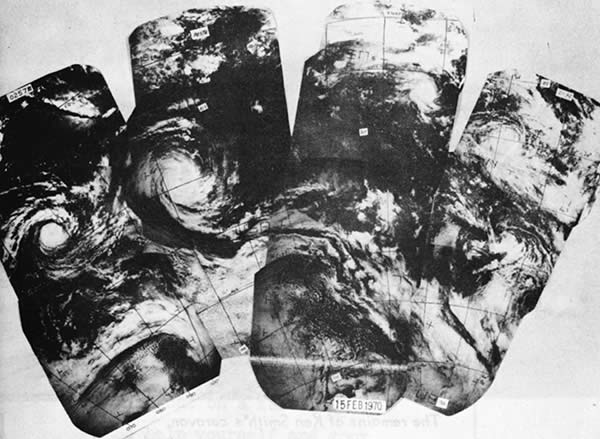George Rutherford and his six cyclones
19 November 2012
The formation of a cyclone or two at one time isn't a far-fetched thought, yet six at one time can be far more than a handful or two.
Cyclones Dawn, Florence and Dolly developed off Queensland in the Pacific; Ingrid and Judy developed off Western Australia—accompanied by Harriet near Mauritius in the Indian Ocean—all drew attention to the rare spectacle in the waters around Australia in mid-February, 1970.
With cyclones happening to the east and west of Australia, George Rutherford, head of the World Meteorological Analysis Centre in Melbourne at the time, enjoyed the dubious pleasure of watching the antics of six separate cyclonic weather systems.
While relevant Bureau Regional Directors were doing the greatest worrying, George was busy explaining the unusual situation to the press on February 12, in addition to his normal duties.
Nobody could ever remember the appearance of so many cyclones at the same time. Fortunately, only Ingrid did any damage. The others moved away and dissipated.

Some of the cyclones visible on 15 February 1970. Image from the Bureau's archives.
Later explaining that four conditions necessary for cyclone formation had obviously occurred in many places simultaneously—sea surface temperatures were high with initial shallow cyclonic circulation at the surface; a deep layer of moist air, and most importantly, favourable upper air wind patterns to induce surface inflow.


Comment. Tell us what you think of this article.
Share. Tell others.